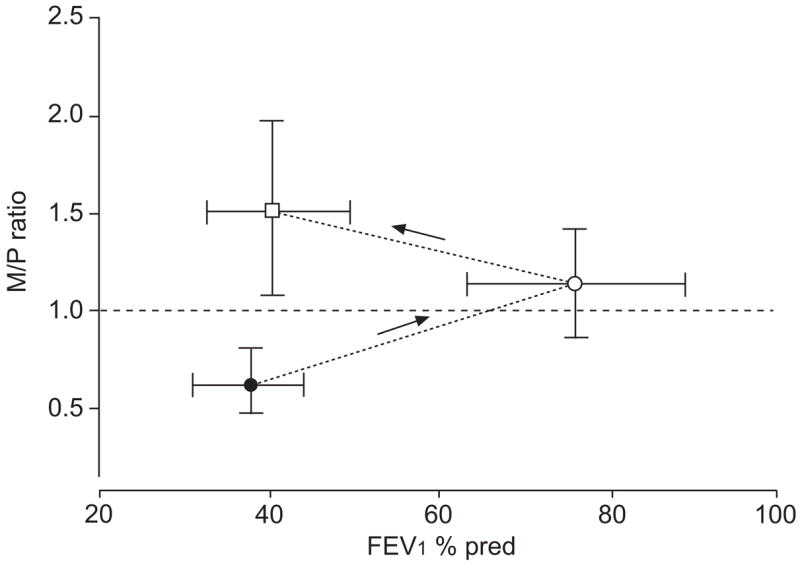FIGURE 1.

Maximal (M)/partial (P) ratio measured during spontaneous asthma (●), following treatment (○) and following acutely induced bronchoconstriction (□; induced by either dry air or histamine). To calculate the M/P ratio, the maximal mid-expiratory flow on a P and complete M expiratory flow volume curve are compared. An M/P ratio of 1 indicates that the deep inspiration accompanying the complete flow–volume manoeuvre causes neither an increase nor a decrease in mid-expiratory flow. An M/P ratio of <1 means that the deep inspiration decreased mid-expiratory flow; while an M/P ratio of >1 indicates that the deep inspiration increased mid-expiratory flow. During spontaneous asthma, a deep inspiration causes further airway narrowing. This paradoxical bronchoconstriction declines with effective treatment and, when comparable airway narrowing is induced by inhalation of histamine or dry air, a bronchodilating effect of deep inspiration is apparent. FEV1: forced expiratory volume in one second; % pred: % predicted. Modified from [41] with permission.
